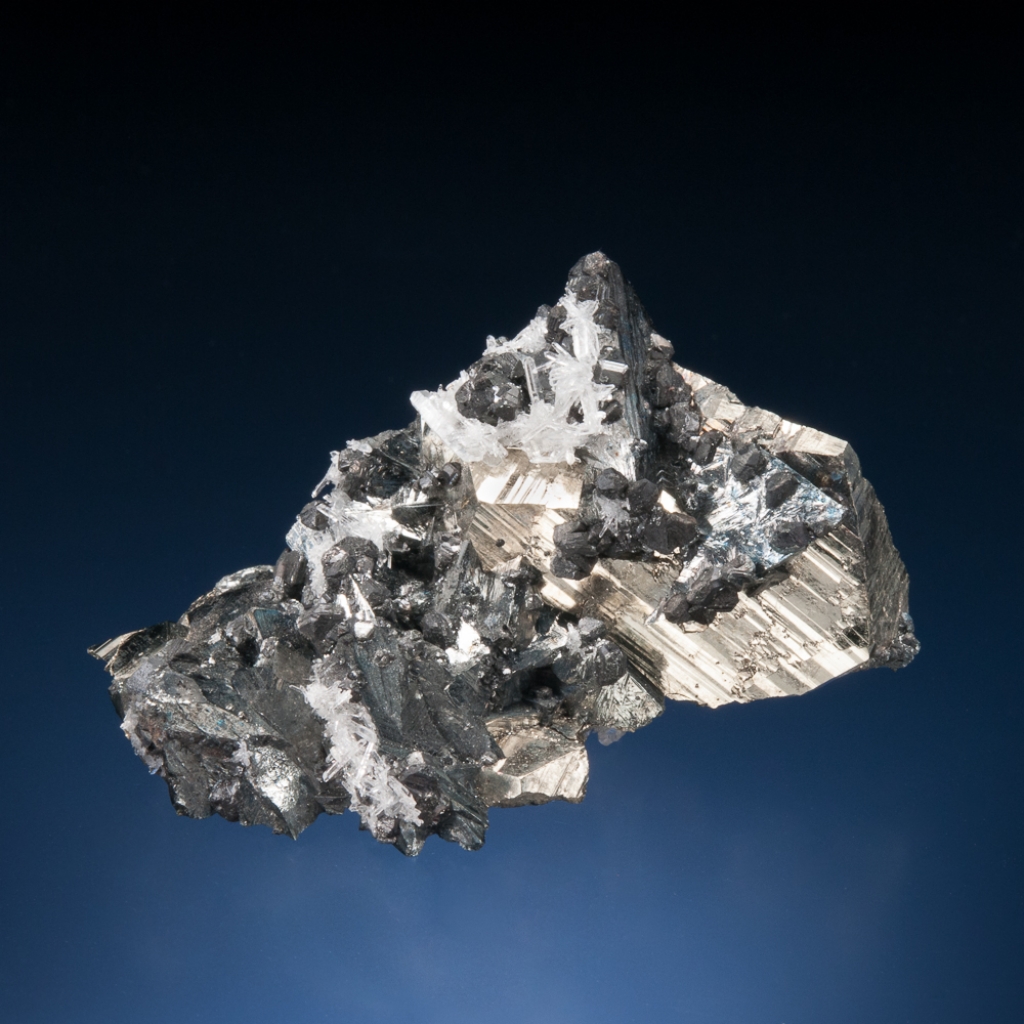Description
Detailed Description
This specimen would be called Tennantite, Pyrite, Sphalerite, Quartz but the website doesn’t like such long specimen names.
A large, bright, brassy pyrite crystal and sharp, lustrous tennantite crystals host a sprinkling of sphalerite crystals. These are are accompanied by sparkling transparent quartz crystals. Many of the sphalerite crystals are erched along the edges of the tennantite crystals – very cool. In excellent condition – minor chipping at lower left. The pyrite and crystals are incomlete around the back, but they are subtly recrystallized, indicating that this group separated from the surrounding host rock sometime late during the mineralization event. Such a nice combination specimen!
Browse more Mundo Nuevo Mine Tennantites (click here)
About these Tennantites
Mundo Nuevo has been best known for its hubnerite, quartz, fluorite and augelite. In recent years there have been occasional excellent finds of tennantite.
These tennantites, mined during 2014-15 specimen recovery work, are part of a find that has now been analyzed quite extensively. Of those (over 40 specimens tested) all were tennantite except one that was a borderline tennantite-tetrahedrite. Accordingly, specimens from this find are now labelled tennantite. I have not had each of these analyzed, given the pervasive tennantite results (and not wanting to add to their prices by incurring unnecessary cost). These tennantites were originally posted on this website labelled “tetrahedrite”, as they were sold to me under that label – they were then removed from the site until the analysis work on the find had been completed.
They are excellent sharp crystals. After the crystals had formed, a late-stage fragmentation and recrystallization event seems to have occurred – the specimens have uneven naturally-fractured surfaces on the back/underside, and these surfaces are recrystallized.


